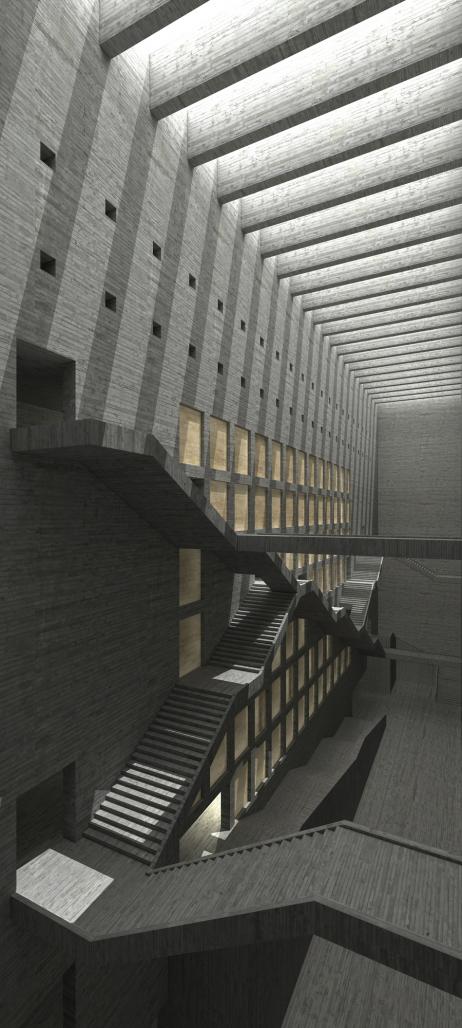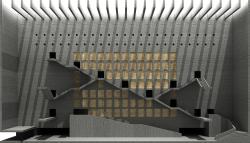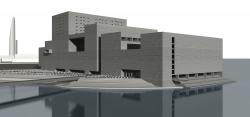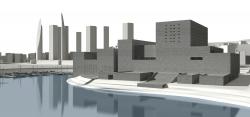The artificial island, with the undefined amoebic form, is the site in which will rise the new Opera House.
The project stands alone in the new urban landscape rising high in the skyline of the new skyscrapers, as a huge solid stereo metric and mono-scale mass which, even a great distance, shows a distinctive feature, the engraving in the huge building.
The project fits in this contest, gathering the entire huge volume of building, within a recognizable definable geometric figure, a rectangle of 198 x 79 meters, completely covered with stone Italian slabs (Roman Travertine). The project is rigorous and conceived with parallel functional and structural bands; it has articulated by alternated rhythm of the structural place of the hollow septum, inhabited bands, which encompass all the minor functions, offices, services, vertical connections, allowing to the major functions to fill the wider space in-between. It has its origins in the concept of the Section. Our project is conceived trough the Section, which describes the succession of spaces in their proportional scales underlining the alternation of narrow and wide, small and big spaces, which ensures surprise and huge spatial experiences. This type of suggestion is typical of the ancient theaters like Paris Opera House.
The main entrance of the Opera house has signed by a narrow passage, a building cut from side to side. This void distinguishes the two different types of theater, the Opera Theater and the Gemini Theater.
The engraving represents a physical but not a spatial interruption of the system. This void distinguishes the two different types of theater, the historical space of the opera and flexible space of the Gemini Theater.
The first one, with its big auditorium of 2376 seats, has hidden inside the mass of the building. It reveals itself unexpectedly to the user whom reaches it through the sequences of compressed spaces. It reproduces, in size and in characteristic horseshoe shape the typical Italian theater.
The latest, with 1726 seats, occupies the entire band of 21 meters wide between the museum, which finishes the building, and the foyer volume. It is composed of two set against audiences to create a versatile theater (auditorium, performance, traditional or experimental theater, etc.). It is possible thanks to the mechanical system that allows vertical movement of the stage floors.
The user, filtering from the outside to the inside under the huge and massive wall of the atrium, discovers the colossal and surprising space of the atrium. It is a huge absolute space, 30m height, with an impressive monumental frontal wall, ornate by translucent alabaster elements that make visible the size of the auditorium. Clinging at this wall there is a great stair that leads to the big auditorium.
The foyer of the Opera has spread over three higher levels, accessible through the hall. Its ground floor is the atrium of the second theater. The foyer and the atrium have connected with the tunnels at different heights
2011
Arch. V. Pizzuto,
F. Coppola,
F. Ominetti










